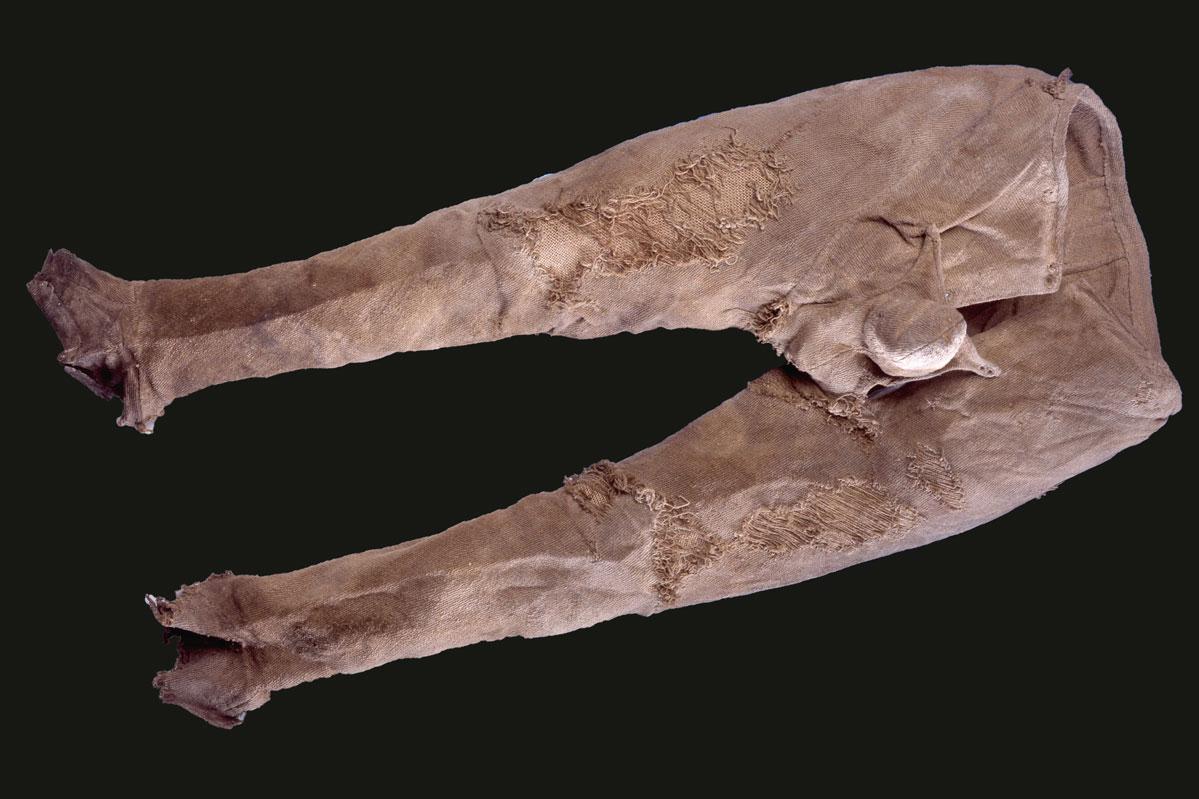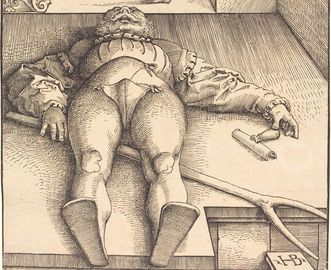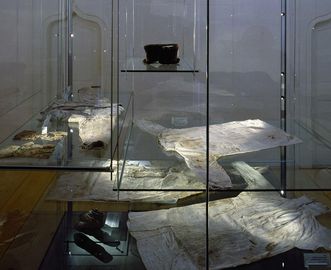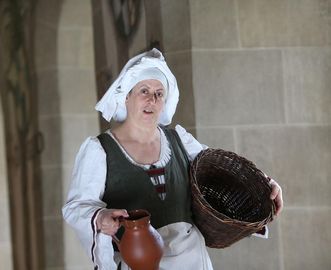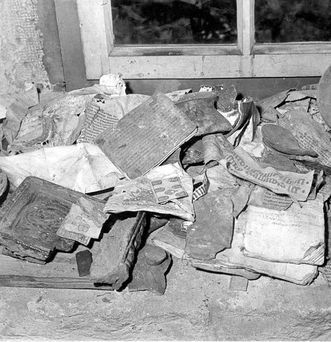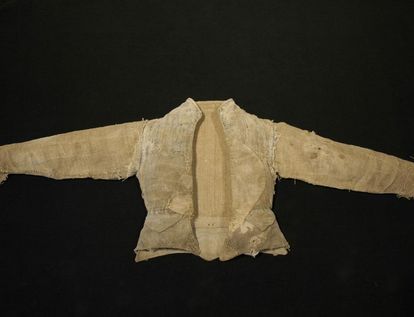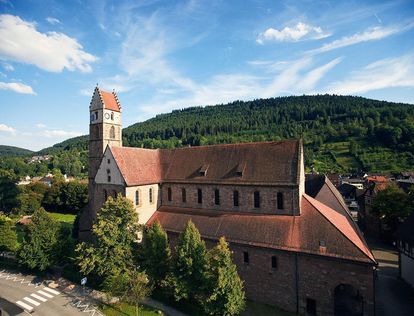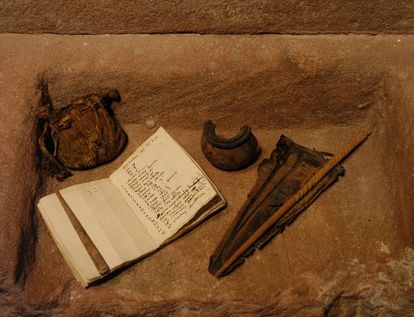THE ALPIRSBACH PANTS
The pants are constructed of coarse linen and are deeply worn by the hard physical labor of their wearer. The most noticeable feature is the codpiece, a type of fixed fly. The cut of the pants also helps date it: Similar tights are seen in illustrations between 1500 and 1520, worn by farmhands, hangmen, farmers and soldiers. This also fits with the wear pattern on the Alpirsbach pants.



